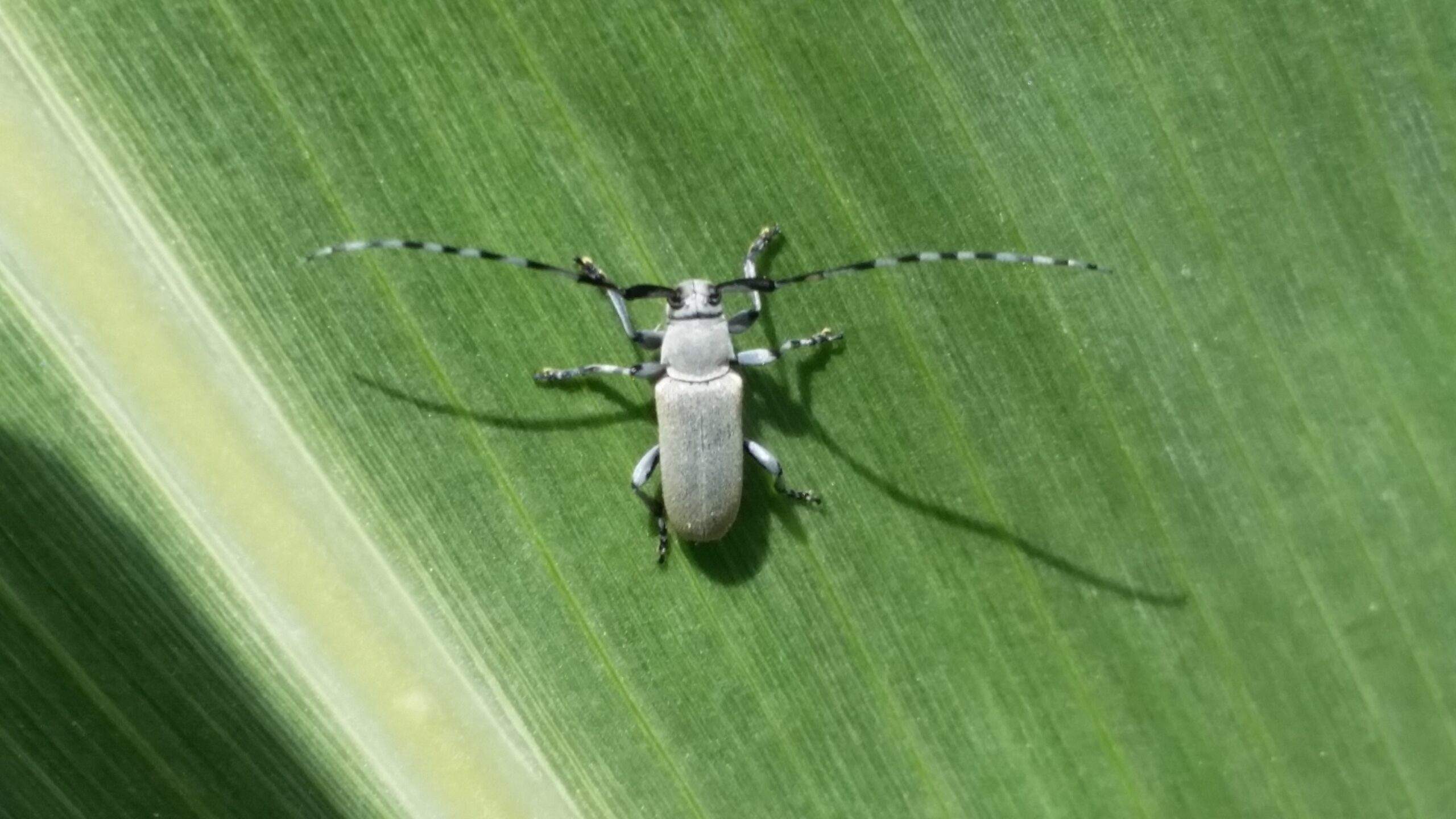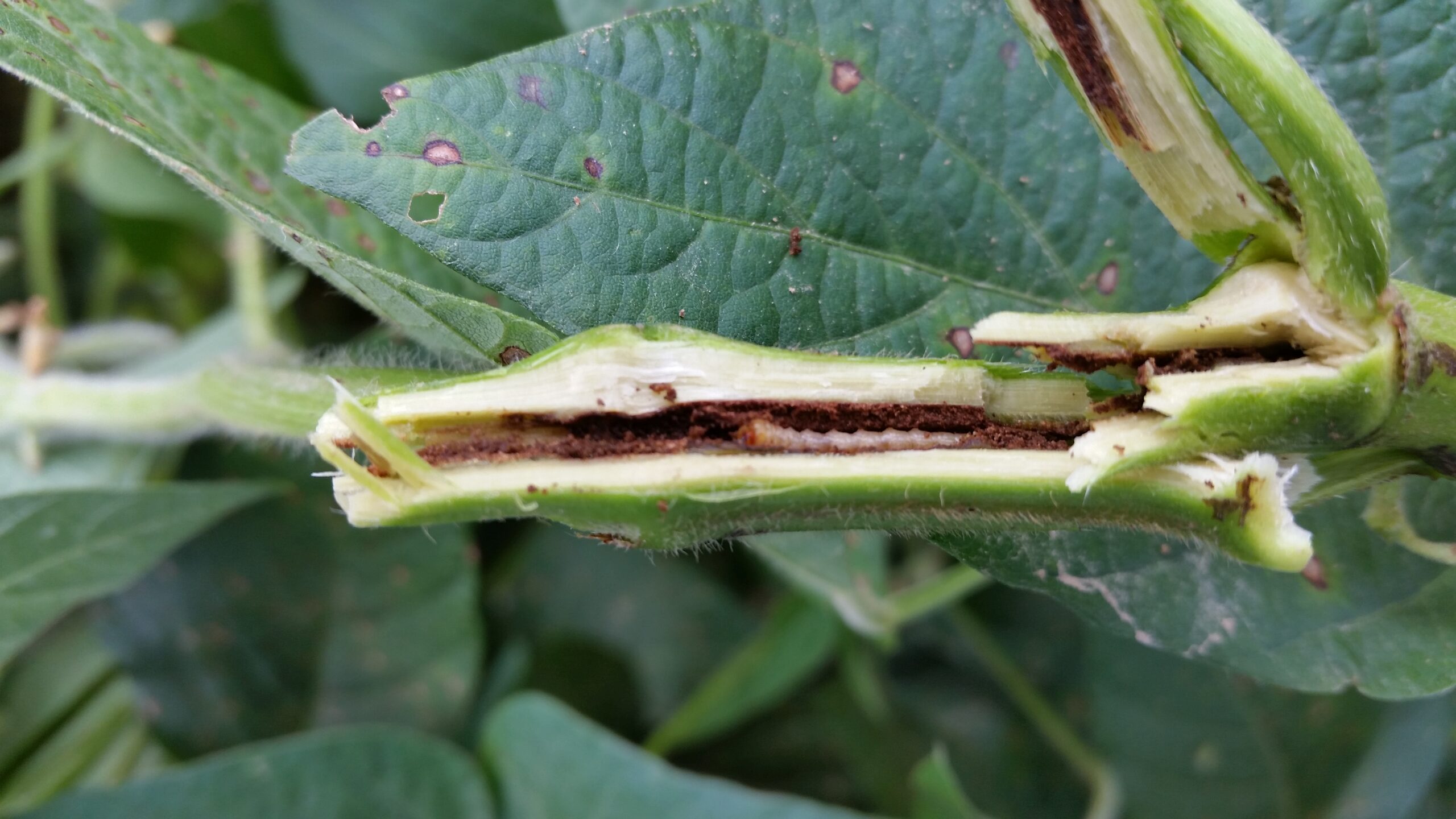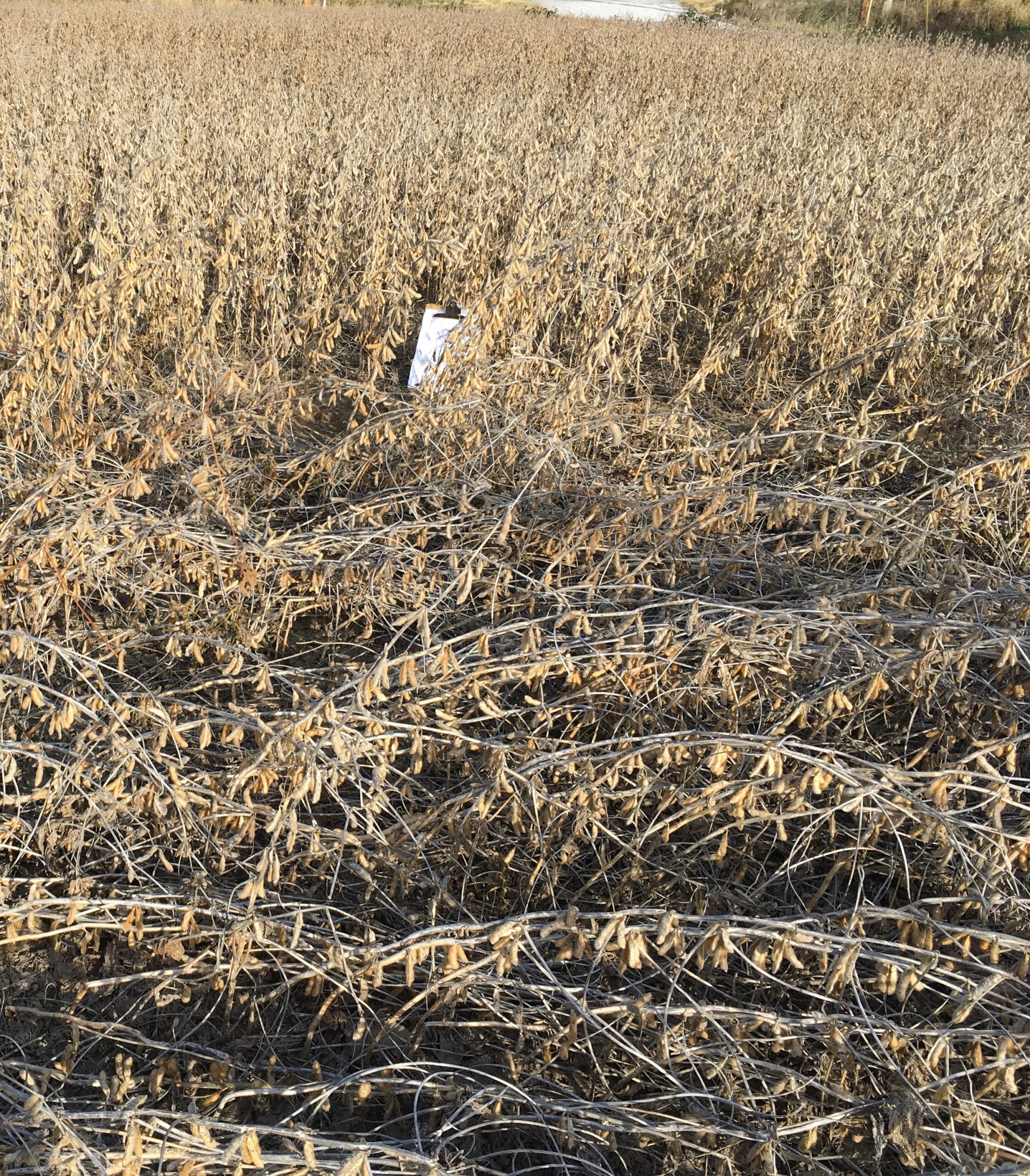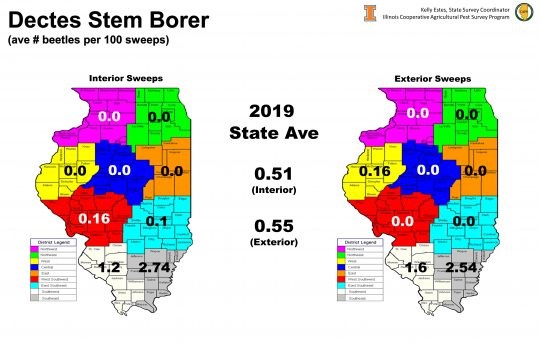This article was written in collaboration with Nick Seiter, Research Assistant Professor at the University of Illinois.
There’s a new(er) soybean pest in town that’s receiving some attention from southern Illinois soybean growers. Feeding caused by the Dectes stem borer contributed to stalk breakage and lodging found in area soybean fields around harvest.

Grayish-blue in color, the Dectes stem borer is a small, longhorned beetle, approximately ½” in length with antennae that are usually as long, or longer than the length of the beetle (Image 1). Adults are present late June through August. During this time, adult females lay eggs in the leaf petiole of soybean plants. After hatching, grubs feed and tunnel within the length of the leaf petiole, making their way to the main stem. Once reaching the main stem, they feed on the pith, and will settle just below the soil line where it girdles the stem and overwinters. Larvae will complete pupation in the spring. The Dectes stem borer has one generation each year in Illinois.

The first sign of infestation is usually the appearance of yellowed, wilting leaves that are being shed from the plant. These dying petioles do not lead to meaningful levels of defoliation but are a sign that an infestation has begun. Splitting the stems of infested plants will often reveal the larvae burrowing through the stem (Image 2). Surprisingly, this burrowing usually causes little to no yield loss. Girdling of the stem and subsequent lodging is the more serious concern, as stems often break off at the site of the girdle. Lodging generally occurs when soybeans remain in the field long after reaching maturity. When harvest is timely and lodging does not occur, even heavily infested fields typically do not exhibit obvious symptoms or economic damage.

caused by Dectes stem borer.
While the Dectes stem borer has been present in Illinois for many years, it is only recently that injury in soybeans has garnered the attention of soybean growers. Delayed harvests in much of Southern Illinois in 2018 resulted in lodging in many Dectes-infested fields (Image 3), putting this pest squarely on the radar of many farmers and consultants. We sometimes find it feeding on other host plants such as giant ragweed, cocklebur, and sunflower. Effective chemical control is difficult to achieve, and we generally do not recommend insecticide sprays for Dectes control. Cultural practices such as tillage and crop rotation can reduce populations, but neither of these tactics function as a reliable control. The most effective management tactic is to harvest infested fields before lodging occurs. While we obviously cannot control when the weather will permit harvest, prioritizing known infested fields will help to reduce the potential for lodging caused by stem girdling.
During our 2019 statewide corn and soybean insect pest survey, the Dectes stem borer was included for the first time. Soybean sweeps confirmed higher numbers of Dectes stem borer in southern Illinois, particularly in the southeast crop reporting district. We did, however, find the beetle present in other areas at low levels as well (Figure 1). We look forward to seeing how populations in 2019 compare with those we find in 2020.
For more information on Dectes stem borer biology and management, we have a new fact sheet available for download at: https://uofi.box.com/v/csen-0120dectes.

Figure 1: During the 2019 statewide soybean pest survey, Dectes stem borer was found in higher numbers in Southeast Illinois.




 and then
and then